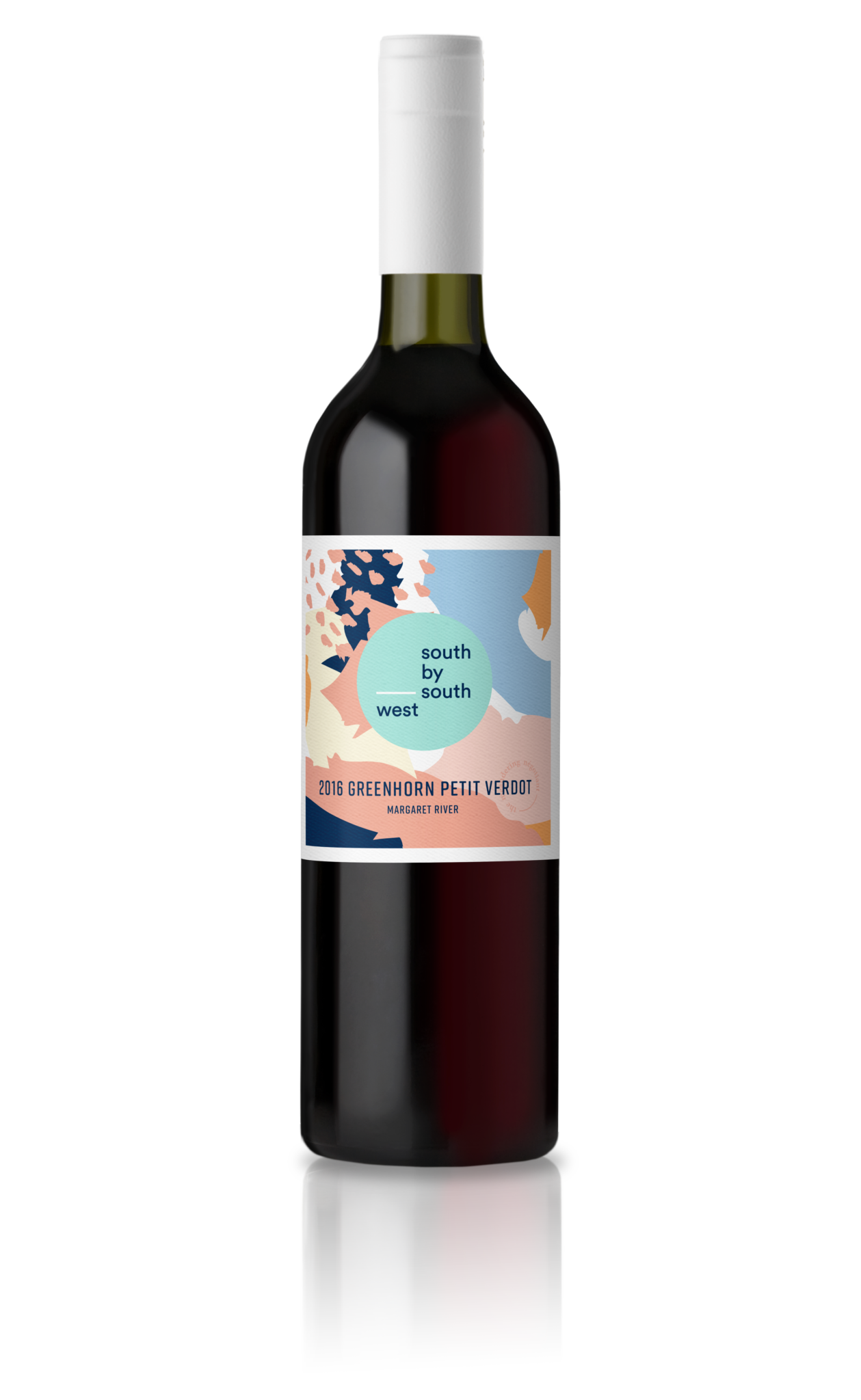2016 Petit Verdot, Margaret River $45.00
The 2016 Greenhorn PV is the ‘big boy’ of our collection. Strong, firm tannins and spices prevail in this wine due to the small berries and thick skin of the Petit Verdot grapes. It is another example of highlighting a grape varietal which is typically used for blending due to its sexy dark colour and wonderfully expressive tannins.
Tasting Notes ~ Download PDF
We ship 6 and 12 packs! Feel free to mix and match, or stock up on your favourite at check out.
Petit Verdot thrives in regions with long, sunny days, and Margaret River therefore is an ideal place for this variety. Our inspiration for this wine was our 2015 vintage in California where we saw firsthand the potential of Petit Verdot as a stand-alone, single varietal, as opposed to using it solely for blending.
We had always planned to use Petit Verdot for blending in our other wines. When we saw the fruit developing on the vines, and the quality of the fruit from the vintage that came in, the decision to use it as a single variety One Tonne Project was an easy one.
After experiencing this vintage in 2015 we travelled through the Greenhorn Mountains in the Southern Sierra Nevada. We’ve therefore named this wine the ‘Greenhorn Petit Verdot’, which is also a nod to the French meaning for Petit Verdot, ‘Little Green One’. This alludes to its typical struggle to ripen late in the season.
Strong and firm tannins and spices prevail in this wine due to the small berries and thick skin of the Petit Verdot grapes. We too needed thick skins and a little luck from the wine god Dionysus to make a wonderfully expressive, Margaret River Petit Verdot.
With a wet winter and spring followed by a dry summer, the Petit Verdot fruit that escaped the beaks of the silvereye birds was always going to shine. The fruit was sourced from one small block of the Miamup Vineyard in the Wilyabrup sub region of Margaret River in April at 14.2 Baume. Petit Verdot is a very late ripener and often the last varietal picked. The saying goes, ‘you know the vintage is over when you are picking PV’, and this was the last fruit that came in in 2016.
After harvest, the fruit was de-stemmed and then very gently crushed. The fermentation regime for the Petit Verdot is slightly different from all other reds due to the powerful tannins. The fruit was inoculated with a Bordeaux yeast for the primary fermentation. The juice was on left on skins in the fermenter for 14 days, receiving gentle work overs, before pressing and barrelling down. Once in barrels, the wine underwent a secondary, malolactic fermentation process. Malolactic fermentation is particularly important for Petit Verdot as it takes a long time for the bacteria to chew through the high amounts of malic acid.
The wine was aged on new and one year old medium toast French oak for 12-15 months to soften it and add flavours of vanilla, hazelnut and mocha, without burying the dark cherry and tannins with oak. The wine was then removed from barrels, clarified and bottled. The combination of the good quality fruit, a careful vinification process, and the help of the wine gods, has resulted in high-toned red fruits with soft, but firm tannins.
This wine is deep red with purple hues.
The nose is dominated by beautiful floral tones of violet, lilac and jasmine. Past the floral tones there is obvious red and black fruit with subtle complexity of mocha.
This is a bold variety with a full-bodied structure, rich in dark sweet fruit flavours of black cherry, blackberries and plums. Past the fruit there are hints of herbal bay leaf and sage.
This is a dry wine with firm tannins and bold fruit that is well countered by the medium-plus acidity.
We aim for minimal intervention to let the fruit express itself, yet there are certain things we do need to maintain the quality and integrity of this wine. We’ve added minimal sulphites to stabilise the wine and ensure its shelf life. It has also been fined with the aid of egg whites and skim milk products to remove harsh phenolic compounds. We use this method as opposed to other by-products as it is extremely gentle in nature and does not strip flavour nor character from the wine, creating a final, high quality polish.
-
Cases50
-
Alcohol14.9%
-
Total Acidity6.7 g/l
-
pH3.57
-
Residual Sugar0.21 g/l
-
Drinking Best2017 - 2025
-
ClosureStelvin


